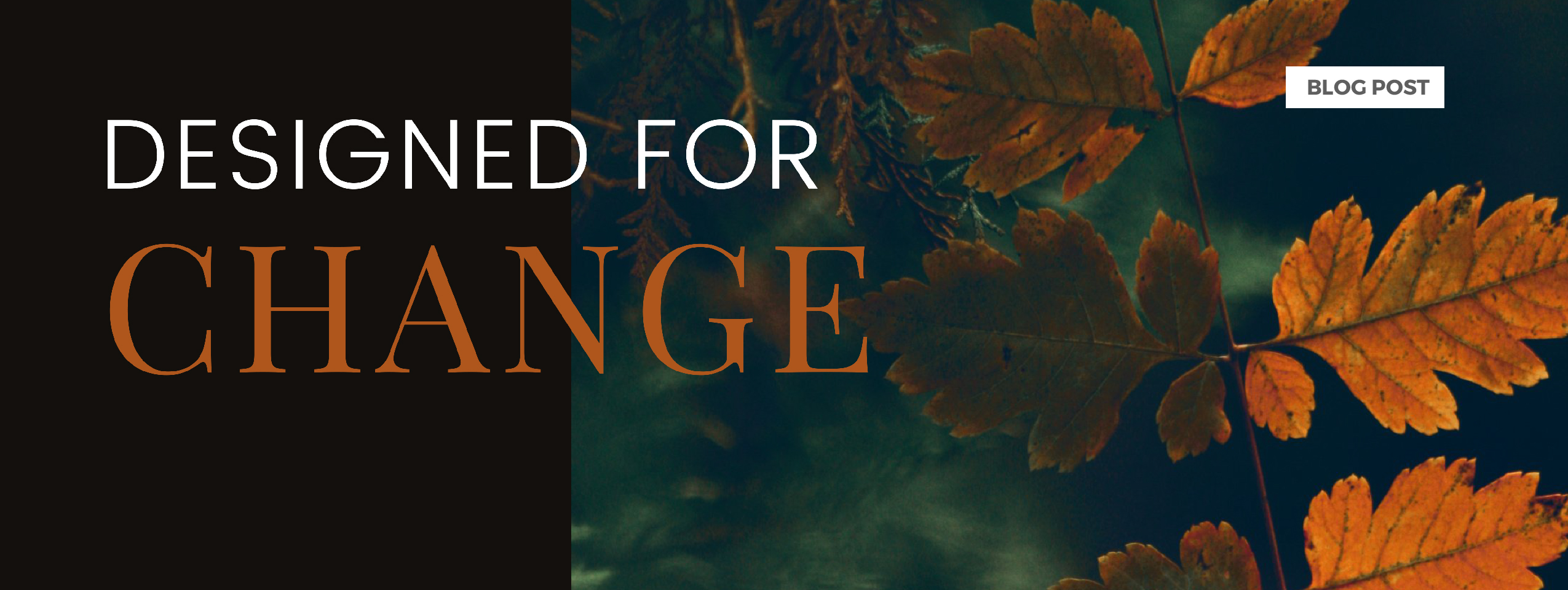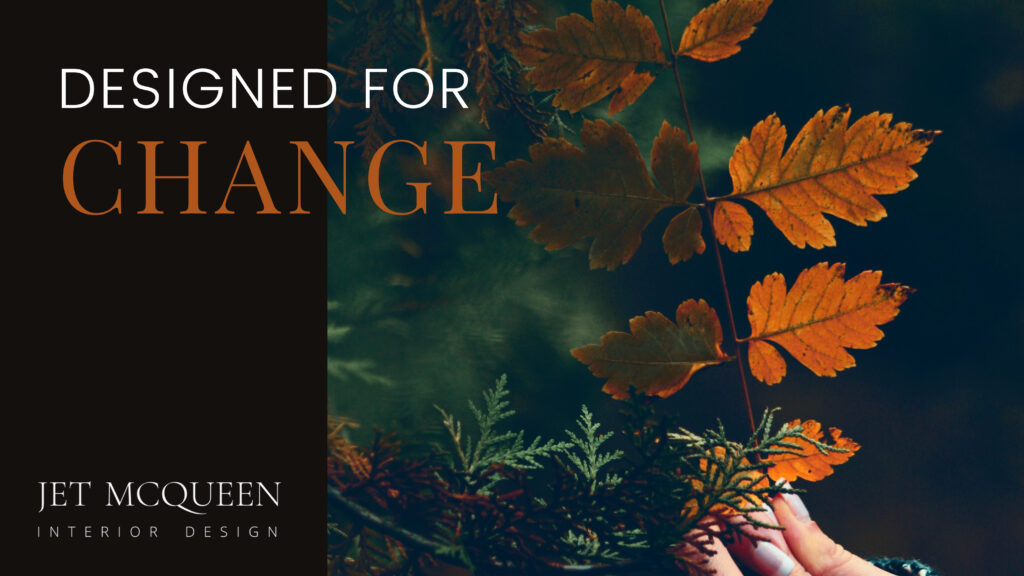Being a Planner & Change, Do Not Go Hand In Hand!
I’m a planner (and I’ve been labelled more than once as a perfectionist), and so I can find unexpected change rather unpleasant. This may seem an unusual statement due to the nature of my business! Change and pivoting plans is my day-to-day norm in an industry fraught with price hikes and supply issues. The reality is, no matter how organised you (or I) may be, the one constant that should always be factored into life, projects, plans…and homes…. is change. So, while my natural tendency (as a control freak) is to manage and pin down requirements (as my disruption radar spins wildly but silently), ….my inner zen knows that disruption is all part of the process and that expecting the unexpected is the most planned part of any plan. After all, it is the human condition to change our minds, and I’m certainly guilty of that.
From a free-thinking perspective, change is no bad thing! It allows us to push the boundaries, try new things and to grow as individuals and improve what already exists. We make mistakes, we learn from our mistakes, and we move on. Sometimes we come round to things we loved and left in the past, (I’m currently coveting an antique mirror last seen in my parents’ home circa the 1970s). While other occasions see that time pushes the past firmly into the passe (take an avocado-coloured bath suite for example). This evolution would never have been possible without the human desire for something different. A demand for the unexpected and for newness and change.
Taste and trend are funny things. We are all consciously and unconsciously swayed by the things and people that have influenced us. Our inclinations and personal tastes are moved by an endless stream of factors from Instagram, celebrities, new technology, marketing and advertising, our friends, and our family to name a few. Whether you are pushing against these trends or flowing with them, it would be hard to argue that they are not influencing you in one way or another. These factors generally initiate change in perspective and influence what is available for us to purchase. We are enticed to “want” to look a certain way or have a certain thing. External factors ignite the desire for our own individual selection, and this change is often reflected in decoration as we put forward a vision of ourselves. Our homes are like a gallery of what it means to be us. All our likes and comforts sit outward for those we care for to witness as we host our friends in families in our homes. In a sense, a decorated space is an outward projection of our combined life story; a mash of our loves and the ones we live with. The collections and favoured items surround us and tell tales of our preferences and pivotal moments.
When a home is ignored, the owners either hide themselves away or stay away from their homes themselves; not wanting others to see their surroundings or to be reflected in that way. But when we have carefully curated a collection of furnishings and taken the time for “things” to look a certain way, then we both nurture ourselves as well as invite others to experience that respective part of ourselves, so that they may enjoy our space too. While there are many, many houses that are built alike, a home is one of a kind. An individual like you.
More than any other place, people take offence to criticism of their homes, and that is because a home is so intimate and personal. An attack on one’s home is like an attack on oneself. What funny mammals we are; often wanting to both “fit in”, and to stand out; To do something expected but in an unexpected way. A personal way. We want to be conventionally unconventional.
We want to be remembered and to also remember. While we love some objects forever and cherish heirlooms for the memories of people, places and things that they carry with them, other furnishings don’t have the pleasure of longevity. Love is fickle and sometimes objects which offer less personal meaning fall out of favour or function in our homes. Because of this, we are constantly curating our homes by removing décor, adding new furnishings to the existing fixtures and unwittingly creating a rich tapestry of our personal development.
Many people look at themselves and think there isn’t much that is different about them from a decade or more ago. They believe they are the same person as they were …. But, when you look back and think about your life, do you really perceive that you are untouched or influenced by time and era? I often think I am exactly the same “young thang” that as I was “back in the day” … but it only takes an hour out with my kids, or a pair of old jeans from my 20’s to face the reality of just how much I have changed. On the most basic level, I have physically changed, but so much more is different about me. For a start, my style preferences have evolved, and I recognise in hindsight that the grunge era was not as inspired as it seemed in the ’90s. I’ve changed my mind, and most probably you have too. Think of your teenage bedroom full of band posters and sports trophies. Contrast this memory with what your idea of a bedroom retreat looks like now! You may still have those concert ticket stubs from Lallapaloosa, but the likelihood is they are either tucked away in a drawer or framed in a photo box in a cute little gallery wall on your staircase landing.
Although “WANT” has a strong pull of heartstrings and wishes, people’s life requirements and physical abilities are the greatest catalysts for change because the demand stems from NEED and not want. It’s a firm probability that it’s not just your looks that have changed over time, your circumstances have changed too.
Your experiences and abilities have impacted your values and what’s important to you. When looking closer at those old photos, look beyond the era of your clothes! Your life experiences have naturally adjusted your point of view and perspective. Your priorities, your abilities, and your physical capabilities may have also altered over time. From singledom to married with kids, divorced, empty nesters, all the way through to age-in-place. This is real life for everyone. Time waits for no one!
While you may not recognize your own metamorphosis, the likelihood is there is a change in your home that’s been due for some time. It’s a change that’s shifted slowly, and you’ve tried to navigate around it… but now the room is overripe for a transformation. You spend your time in different rooms, you spend your time with different people and spaces you once used are now storage lockers of excess. Where your weekends may have once been filled with toddlers running between the kitchen and playroom, today may see you requiring a quiet garden sitting room and a home office far away from a teenager’s bedroom? But who can see you best, and cater to your change requirements? An Interior Designer is a good person to have around when you finally recognise your life is not what you thought it was anymore. You may be experiencing difficulties in your home, and you are beginning to see (despite your best efforts) that you need some experience and support.
Interior Designers can sometimes be negatively stereotyped into a vision of “change for change’s sake”. An industry of creative types who are absorbed by trends and fashion over function. A group who are too focused to truly hear a client, and unconcerned by budget, and a client’s practical needs. Images of self-absorbed closed sighted narcissists who are trolling ahead at full steam towards an aesthetic goal with unwavering gusto and a lack of pragmatism or partnership. In my own experiences (and thinking of colleagues who also work in the industry), I would say this couldn’t be further from the truth. While we may feel inspired by new objects, shapes, and fabrics, most designers will tell you that the part of design that really fires us up is catering our design ability to someone’s desires and lifestyle needs. That feeling we get when we light up a client by fulfilling what they couldn’t do for themselves, or by stopping them from doing something that would have hampered their faculty to really get the most function and pleasure from a space. We are finely attuned to how people change and what people’s needs are. It’s natural for us because we partner with so many different types of people (both as clients and as industry suppliers). We get to see new innovations and technologies, and we meet people in different stages of life, with different ambitions, family members, physical abilities and interests and desires.
Home evolution is so much more than trend-led aesthetics; It is about real-life requirements for living well, and that reflects on both the aesthetic and functional harmony. The “need” element pushes change forward in a more meaningful and urgent way. It is normal that our lives expand and that they also contract. This shift can’t help but impact the “change” demand we place on our home, the duration the amendment is required and the ways in which our homes must adapt with us to provide solutions for living each chapter. We are most heavily influenced to adjust when life’s changes create an obstacle that must be resolved, but that doesn’t mean we must abandon our wants. When it comes to the look of our homes we are most often influenced by our preferences and wants towards a current trend, but when it comes to the function of our home, need incentivises.
Change is the one guarantee life offers us all. To make your life’s needs as desired as your wants, seek out an Interior Designer to help take the uncertainty out of change.



Comments are closed